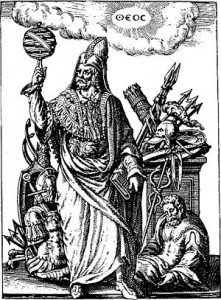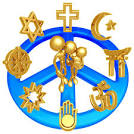
Patience opens the door to more meaningful opportunities.
I have a love-hate relationship with social media having been banned from posting on Facebook for several weeks. I have no idea why I was banned, all I do is post positive messages of peace and joy. There was no one to contact when the ban occurred and no appeal process. When I see some of the destructive messages posted on social media that seem to stay there for weeks on end my ban does not make a lot of sense. Maybe this is just an indication of the world we are now confronting, a nonsensical world out of which we must create some order. Order requires all of us to exercise some discipline. Besides going vegan, doing my daily yoga exercises and taking a walk every day, writing has been my greatest form of discipline. Writing helps me to delve into the past, explore the unconscious and the emotions that get attatched to every day events. Below is a taste of my research for the new book I am currently writing.
 Medieval woodblock, Anonymous.
Medieval woodblock, Anonymous.
Fact.
The Knights Templar.
In 1300 BC a great famine in Palestine forced the Jews out of Palestine and into Egypt. There the Pharaohs used the Jews as slave labour and treated them with immense cruelty. Moses, the first of the great prophets, then led the Jews out of Egypt and into the desert. While the Jewish travellers were resting Moses went alone to Mount Sinai as ask for God’s advice. On Mount Sinai Moses received God’s Ten Commandments, also known as the Ark and the Covenant, but Moses was away for so long the people, fearing their plight, made a Golden Calf for their worship. The Jews rejected God’s Commandments and instead worshiped their old idols, Astarte, Baal and the Golden Calf.
In the first millennium BC David a descendant of Moses conquered the city of Jerusalem from its indigenous inhabitants the Jedusites. David and Moses both arose from the same lineage that dated back to Jacob, also called Israel. They came from different sons of Jacob, David was from the tribe of Judah, while Moses was from the tribe of Levi. The Ark of the Covenant was in the care of the Levites.
Below the citadel on Mount Moab David bought a site for a Temple that would house the Ark and the Covenant, but David had no right to it, he was not even allowed to touch it. David assembled the materials for the Temple, but it was eventually built by his son Solomon in about 950 BC. The Ark remained with the Levites until Solomon built the Temple in Jerusalem.
Israel remained an independent state until Solomon’s death when it was conquered by nations to the east that included the Assyrians, the Chaldeans and the Persians. The Temple was destroyed by the Chaldeans in 568 BC and the Jews were transported to Babylon as slaves. The Chaldeans were then conquered by the Persians who allowed the Jews to rebuild their Temple in 515. The Persians were then conquered by the Greeks, but due to their absence many of the regions were actually governed by Jews. In 167 BC the Jews gained their independence, but not without constant struggles against neighbouring states. Jerusalem was then placed under the guardianship of the rising Roman Emperors who became the arbiters of power over the entire Jewish State. The Jews could not assimilate into the Greek or Roman way of life. Instead, they retained their destiny as God’s chosen people. This was to result in an inevitable fight for their homeland.
A group calling themselves the Zealots resisted the Romans, but they were outnumbered. Many Zealots burned their possessions, took their own lives and those of their families rather than being tortured and killed by the Romans. A second uprising, led in part by the Messiah Jesus of Nazareth was predicated on the idea that the only way to a victory was to turn the Gentiles into Jews and increase their numbers, but the Jewish conservatives rebelled against this idea. Hence, the second uprising produced a worse result than the first. Many Jews were forced to flee. Nonetheless, a small number of Jews began preaching to the Gentiles, thus the religion of Christianity was born.
During the many ensuing wars over the governance of Jerusalem a group of men called the Hospitallers assisted the wounded and sick who came to their hospitals from the battlefields. The Hospitalers were so concerned about the ongoing wars they banded together to create their own military order aiming to drive the Islamic forces out of Jerusalem. They became the Order of Knights of the Hospital of Saint John of Jerusalem, otherwise called The Order of Saint John. They were joined by another group, The Order of the Temple who were a religious-military institution founded by a group of warriors in Jerusalem in the decades following the First Crusade of 1097–99. The group first received royal and church approval in 1120, and papal authorisation in January 1129. They protected Christian pilgrims on the roads to the pilgrimage sites around Jerusalem and also helped to defend the territories that the First Crusade had conquered. As members of a religious order, they made three vows: to obey their superior officer, to avoid sexual activity and to have no personal property. They were called ‘Templars’ after their headquarters in Jerusalem, the Aqsa mosque, which westerners believed was King Solomon’s temple.
Western European Christians gave the Templars gifts of land, money and tax concessions to help their Crusades, and the brothers of the order also traded and acted as government officials for the rulers of western Christendom. They acquired large estates in western Europe, set up farming businesses, travellers inns and they acted as bankers. In the Middle East they and their fellow military orders, the Hospitallers, faced increasingly devastating assaults from the well-equipped and well trained Islamic forces. The sultan of Egypt conquered Jerusalem in 1244, and in 1291, Acre, the final capital of the crusaders’ kingdom, fell to the Muslim army. The Templars and the Hospitallers who escaped the massacre at the hands of the sultan’s forces moved their headquarters to Cyprus and set about trying to organise a new crusade.
The Templar grand master, Jacques de Molay, was in France planning such a crusade when he and all the Templars in France
were arrested on the order of King Philip IV of France in October 1307. The brothers were charged with heresy, tortured and killed.
In April 1312 Pope Clement announced that although the Templars were not proven guilty, the order’s good name had been so damaged that it could not continue. He dissolved the order and transferred most of its properties to the Hospitallers. The Templars were sent to live in other religious houses, and their order ceased to exist.
The Templers in 14th-century Britain.
At the time of the arrests in January 1308, there were Templars resident in only 35 of their known houses in England. The king’s sheriffs who arrested the Templars also confiscated their lands. Royal officials administered these and sent their revenues to the king’s exchequer. The king gave some of the estates to his favourites and to important nobles. Many lands were returned to the families who had originally given them to the Templars.
In May 1312 Pope Clement gave the Templars’ lands to the Hospitallers, but the king and his nobles refused to give them up. It took the Hospitallers more than two decades to gain the bulk of the Templars’ English estates; they never recovered some properties.
The Templars’ estates in Britain were concentrated in the east of England and the southern Midlands, with some lands on the English-Welsh border, and there were two sites in Scotland. Their location depended mainly on property which landowners had donated, someTemplars also purchased their own estates.
Templar farms and other lands were grouped into commanderies with the larger manors administering the lesser holdings. Commanderies in Britain were on flat or gently rolling land, and often sited on rivers for trade and good transportation.
The Trials in France.
King Philip IV of France ordered the arrest of all the Templars in France on 13 October 1307, charged with denying Christ when they were received into the order, spitting on the cross and exchanging obscene kisses, committing sodomy with each other, and worshipping an idol. He ordered they be tortured and killed.
Pope Clement V initially protested, then ordered the arrest of all Templars in Christendom and their interrogation for heresy. In August 1308 the Pope reported that the leading Templars in France had confessed to “horrible things” and that he had absolved them – on condition that they perform penance –and he tried to ensure that the Templars had a fair hearing. In fact, the only Templars to confess to any of the charges were those under the jurisdiction of the king of France or his relatives.
In the kingdom of Aragon, King James II ordered the Templars’ arrest, but had to besiege them in their castles before he could enforce this. The Templars were interrogated, but failed to confess to anything.
In northern Italy the archbishop of Ravenna refused to allow torture to be used and no Templars confessed. In Cyprus, the Templars and non-Templars who gave evidence insisted that they were innocent. In Portugal King Dinis brought a legal case against the Templars to recover lands given to them by his predecessors, but there was no heresy trial. In all, the results of the trials outside France supported the Templars’ innocence.[1]
Much of the history written about the Templars gives focus to the exotic warrior knights,their exploits and their demise, but there were many Templars with smaller, less conspicuous roles who were clerks, builders and community officials. There are families with Templar origins that no one has ever heard of.
The Templars organisation still survives to this day and as individuals they have left their mark on the most unsuspecting of people and places. My work examines some of the Templar influences at a grass roots family level.
[1] https://www.historyextra.com/period/medieval/the-templars-a-brief-history/



































